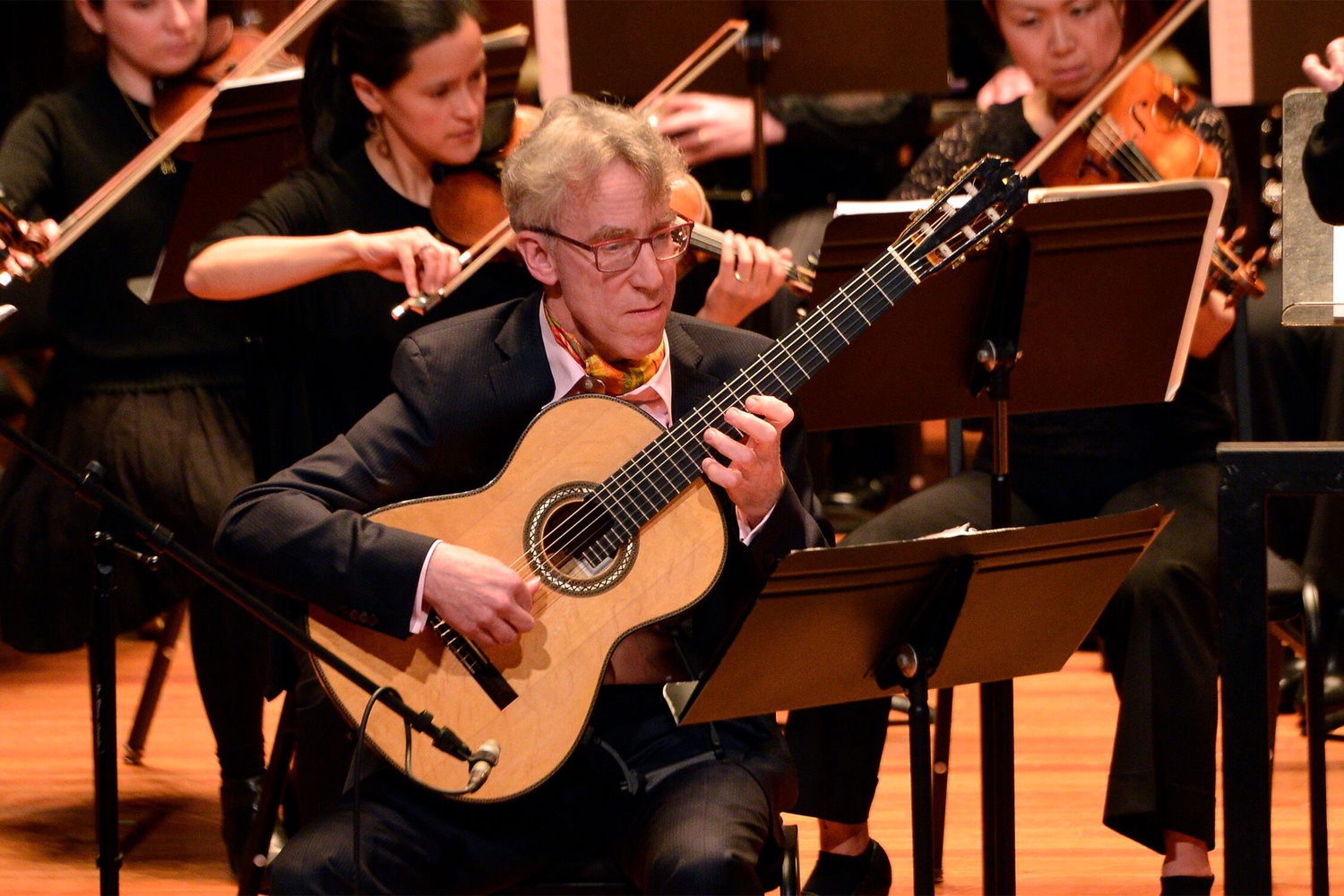
News
Summers Will Not Finish Semester of Teaching as Harvard Investigates Epstein Ties

News
Harvard College Students Report Favoring Divestment from Israel in HUA Survey

News
‘He Should Resign’: Harvard Undergrads Take Hard Line Against Summers Over Epstein Scandal

News
Harvard To Launch New Investigation Into Epstein’s Ties to Summers, Other University Affiliates

News
Harvard Students To Vote on Divestment From Israel in Inaugural HUA Election Survey
Boston Modern Orchestra Project’s ‘John Corigliano Portrait Concert’: A Journey of Many Proportions

The Boston Modern Orchestra Project prides itself on championing “monumental and provocative new works,” with the hope of expanding “the horizon of a typical night at the symphony,” according to its mission statement. Its most recent concert of the season, “John Corigliano Portrait Concert,” embodied exactly that: Under the baton of artistic director Gil Rose, the orchestra embarked on an expansive and refreshing musical journey, highlighting contemporary orchestral innovation in a surprisingly accessible manner.
The performance, which took place on Feb. 23 at the New England Conservatory’s Jordan Hall, featured works by two composers, John Corigliano and Diana Voyer. Corigliano is well-versed and well-known in today’s compositional realm — he has won five Grammy Awards and a Pulitzer Prize and is on the composition faculty at the Juilliard School, while Diana Voyer is an engineer by training and winner of this season’s New England Conservatory’s Composition Competition. Voyer’s piece, “The Infinite Forest,” harmonizes their quantitative background with their natural musical intuition in the form of a “process piece” based on mathematical constructs like prime numbers and non-abelian groups. Despite the work’s rigorous backbone, the music never feels artificial or contrived. Instead, “The Infinite Forest” unfolds continually like a tapestry, wherein myriad members of the orchestra interact delicately — yet deliberately — with one another, highlighting independent timbral motion while ensuring that none take an overpowering role. Indeed, meticulous orchestration and musicianship allow for a veritably immersive, forest-like soundscape to emerge, moving through passionate climaxes and moments of repose seamlessly.
Corigliano’s pieces, though not as through-composed, reflect as much musical intricacy and thought. Such is the case with his “Symphony No. 2,” a work for string orchestra. Written in five movements, the work is a structural palindrome, thereby embarking on an aural adventure that culminates in a similar tonal and orchestrational place as it began — albeit undergoing a deep-rooted transformation through the course of the piece. The outer movements, aptly titled “Prelude” and “Postlude,” embody a hazy quality that feels as uncertain as it does ethereal. Indeed, the nuance of the orchestra’s strings highlighted this notion, imparting clarity and smoothness. These movements are respectively bordered by “Scherzo” and “Fugue,” both of which start with a more-or-less rigid order that devolves, equally through orchestrational and structural methods, into fervent chaos. This leaves the middle movement, “Nocturne,”as a being of its own: Gliding in and out of both tonality and concerto-like form, the movement approaches the lament in a sparse but equally impactful way. It is through this extensive, impassioned structural treatment that the root of the work — the Baroque-like chorale that features itself in some way in each month — epitomizes a symphonic journey.
However, perhaps the most compelling piece of the night was Corigliano’s “Troubadours,” a single-movement (but in three parts) concerto for guitar and orchestra. Grounded around a beautifully wistful flamenco-esque tune, the work undergoes a series of transformations that are transportative and reflectionary. Yet, these transitions are never once jarring, instead taking on a subtler, more nuanced quality. This is enhanced by Corigliano’s phenomenally gifted orchestration: the impossibly smooth coalescence of the strings’, the winds’, and the guitar’s timbre at the piece’s opening is just as striking as their independence in the second part. It is this aspect of “Troubadours” that makes its main theme — when heard in the solo guitar with shocking sparseness compared to the rest of the work — so powerful each time it returns. The masterful, virtuosic performance of soloist Eliot Fisk allowed Corigliano’s concerto to embody the warm, intimate storytelling which the title suggests.
Through these avenues, Gil Rose and the Boston Modern Orchestra Project managed to craft not only three independently fulfilling musical journeys, but also one macroscopic voyage: From the precision of Voyer’s opening notes to Corigliano’s subtle finish under the craft of the orchestra’s musicians, the performance’s program takes both an emotional and harmonic arc, thereby embedding novelties in compositional techniques with roots that naturally resonate and synergize, as most stories do.
—Staff Writer Ian Chan can be reached at ian.chan@thecrimson.com.
Want to keep up with breaking news? Subscribe to our email newsletter.
